Congonhas is some 80 km south of the city of Belo Horizonte. There are numerous inter-city coaches that connect these two places, most often just by making a stop in Congonhas, while they actually connect Belo Horizonte and some other bigger town. Congonhas is most famous for its Sanctuary of Bom Jesus do Congonhas. The complex consists of the Basílica de Bom Jesus de Matosinhos, a staircase with the sculptures of 12 prophets made by Aleijadinho, the most famous Baroque artist in Brazil, and a churchyard that incorporates six chapels in which there are groups of sculptures also made by Aleijadinho.
The church itself is considered a significant example of the Baroque art, but the sculptures of 12 prophets, as well as the chapels with their sculpted groups are considered the masterpiece of their author. In addition to its artistic and historical value, the complex also continues to have an uninterrupted importance in the spiritual sense.
Since this is the most important tourist destination in the town, it is possible to catch a local bus from the coach terminal, since the sanctuary is relatively quite far away, plus it is on an elevation. We, however, opted for a taxi since it was faster and then the taxi driver took us to the level of the staircase.
In order to approach the basilica that is a part of the complex, one needs to walk up a staircase the fence of which is decorated by the sculptures of 12 Old Testament prophets: Jonah, Daniel, Hosea, Joel, Amos, Baruch, Ezekiel, Nahum, Obadiah, Isaiah, Jeremiah and Habakkuk.
Aleijadinho did them while he was already in his advanced years and these were his first sculptures that were made for free space, i.e., they have no background behind them, like a niche or a wall. Each one of the prophets holds a scroll which is, like the sculpture it belongs to, made of soapstone and which contains a brief message written in Latin.
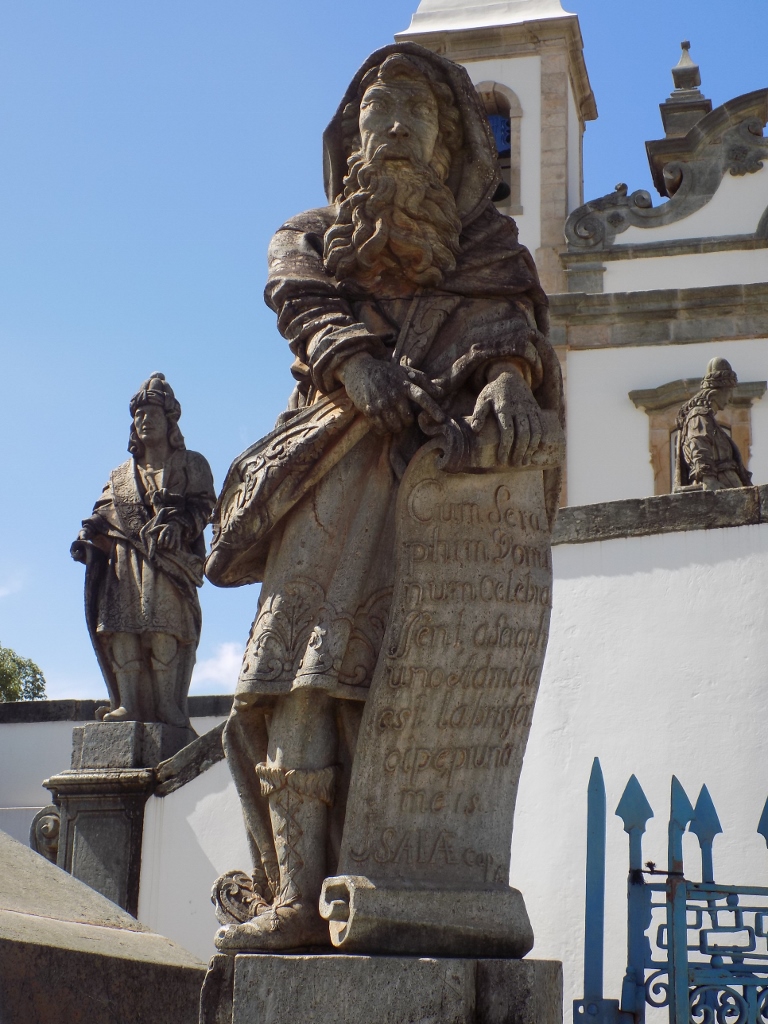 Isaiah, with Baruch to the left, while Daniel is to the right and back
Isaiah, with Baruch to the left, while Daniel is to the right and back
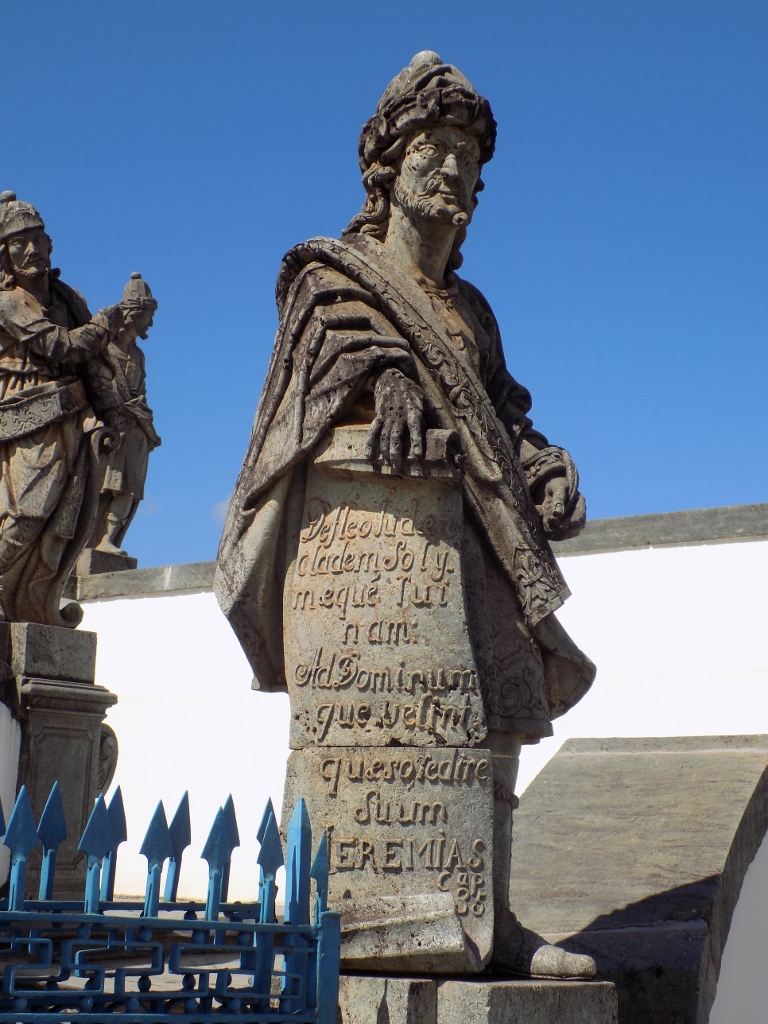 Jeremiah, with Ezekiel and Joel in the back
Jeremiah, with Ezekiel and Joel in the back
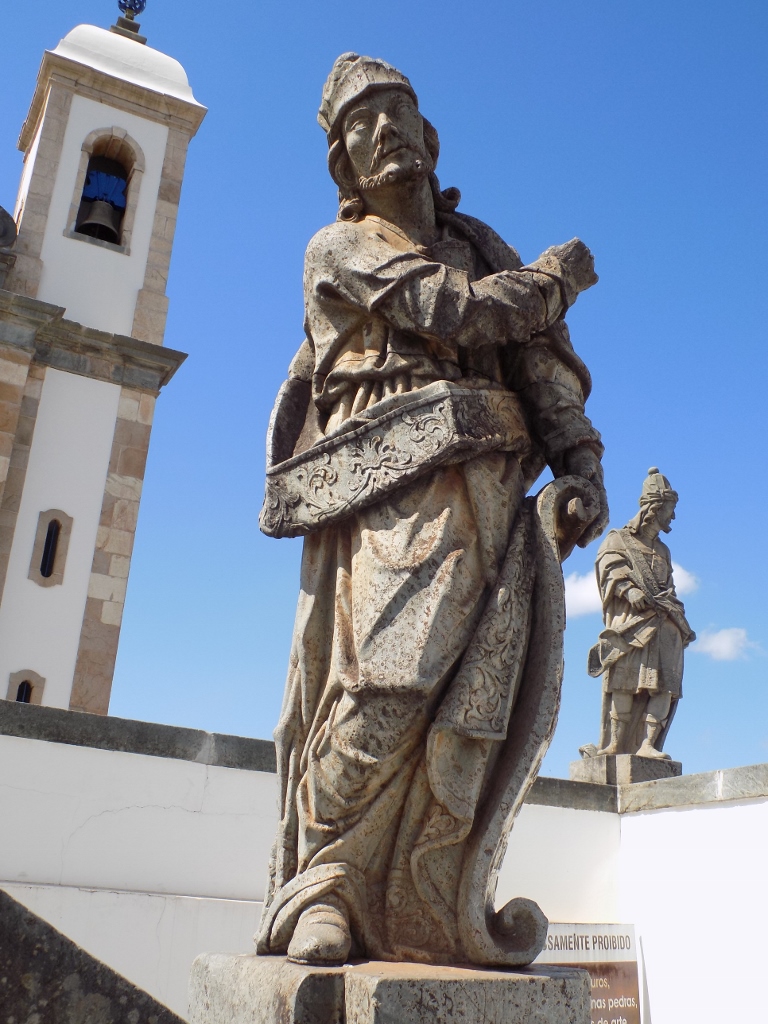 Ezekiel up close and Joel in the back
Ezekiel up close and Joel in the back
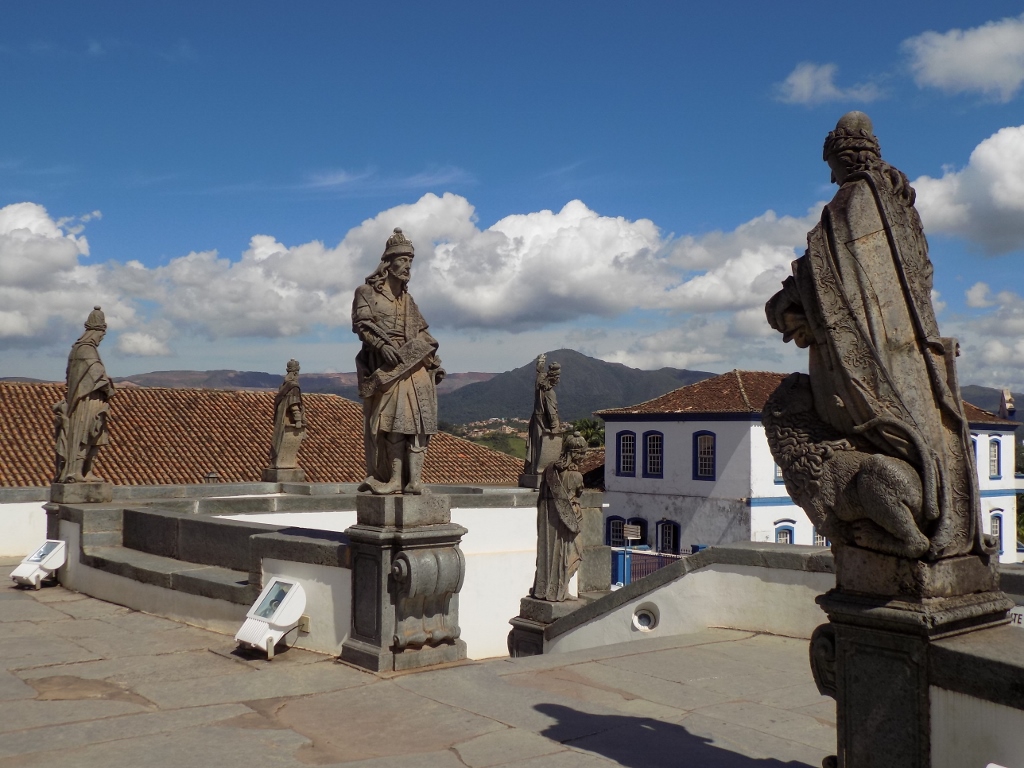 From left to right: Joel, Nahum, Hosea, Habakkuk, Ezekiel and Daniel
From left to right: Joel, Nahum, Hosea, Habakkuk, Ezekiel and Daniel
The church was built in the second half of the 18th century and, among other reasons, on account of the magnificent interior with elements of the Italian rococo it is considered a masterpiece of the Baroque style.
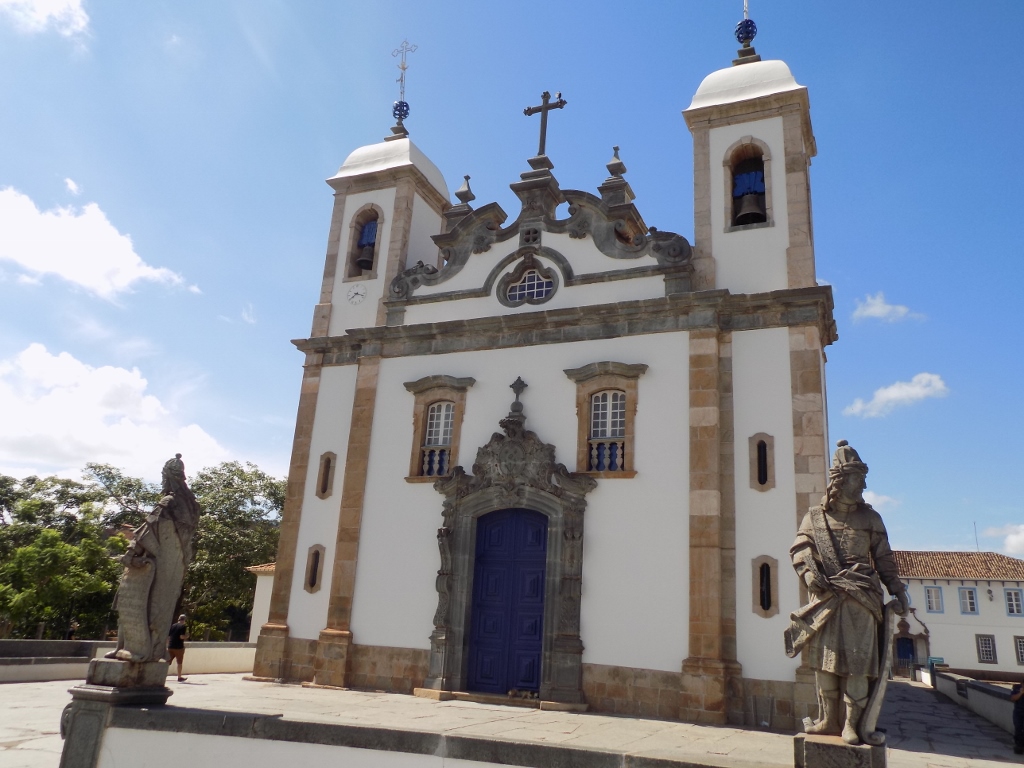 Basílica de Bom Jesus de Matosinhos with prophets Hosea and Joel
Basílica de Bom Jesus de Matosinhos with prophets Hosea and Joel
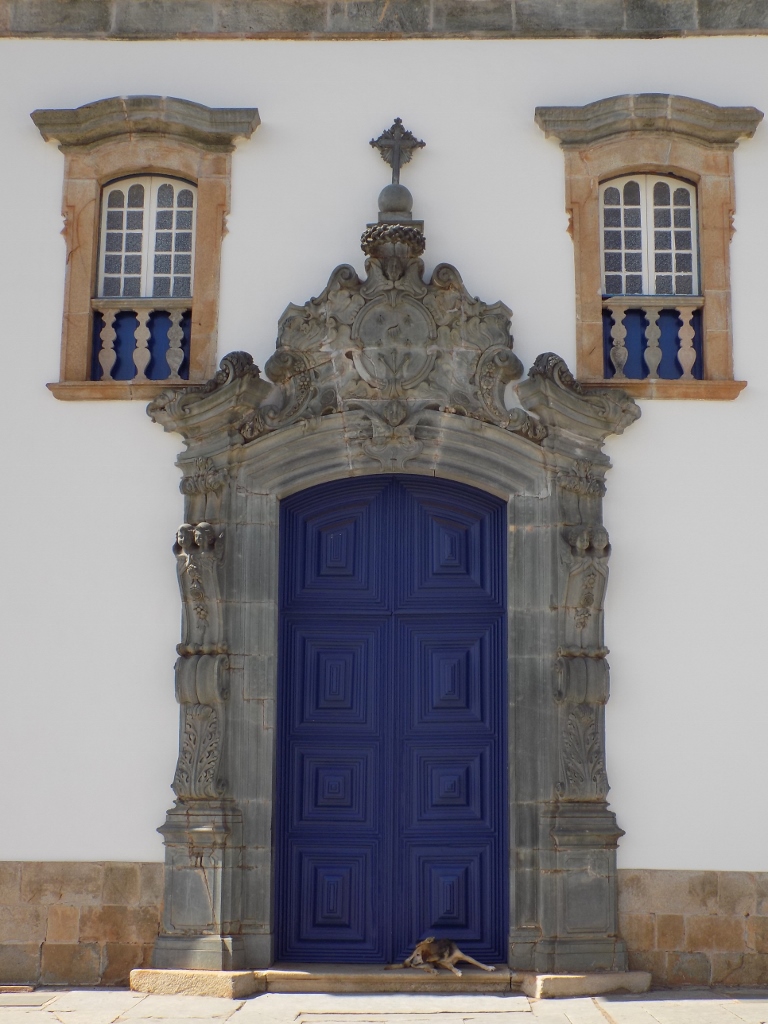 Basílica de Bom Jesus de Matosinhos, a detail
Basílica de Bom Jesus de Matosinhos, a detail
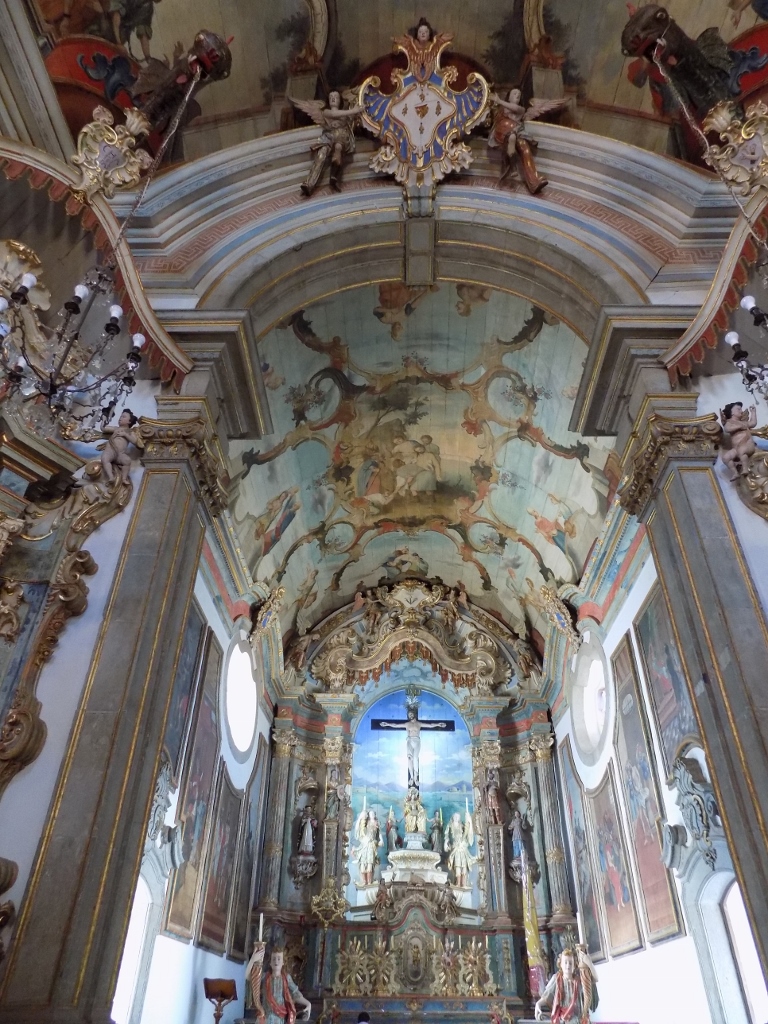 Basílica de Bom Jesus de Matosinhos, interior
Basílica de Bom Jesus de Matosinhos, interior
Next to the church, there are a few other buildings including also the Hall of Miracles in which a large collection of ex-votos is kept. Ex-voto is a votive offering to a saint after fulfilling a prayer. Here, there are even some ex-votos from the 18th century.
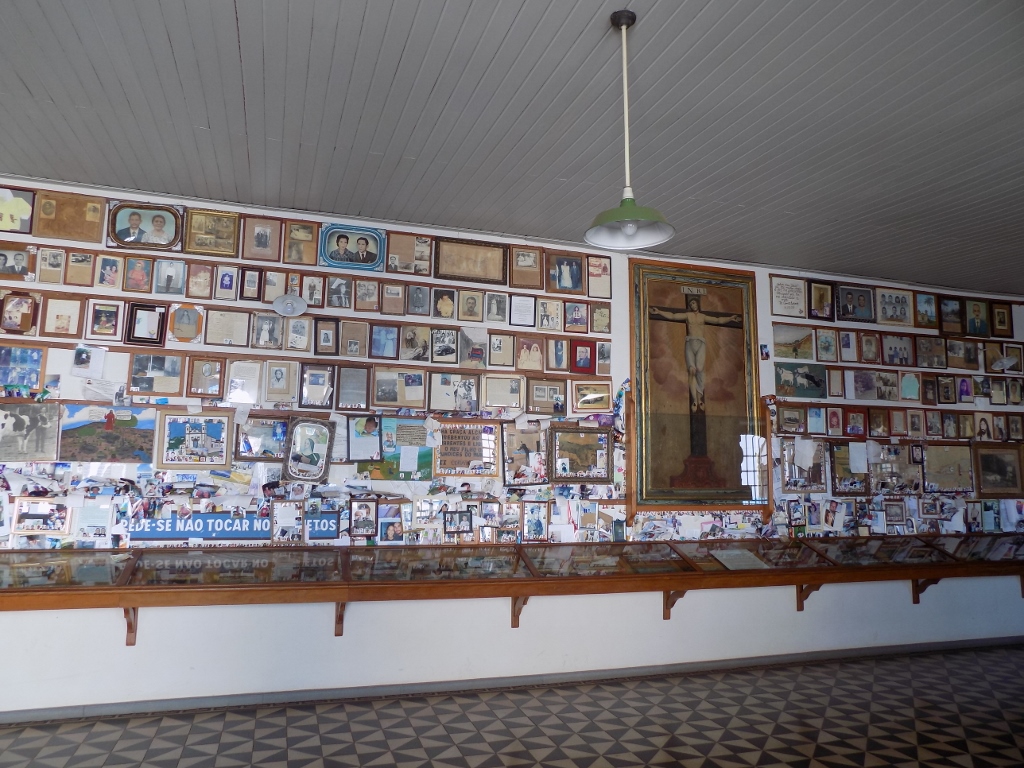 Hall of Miracles
Hall of Miracles
After we had finished with our visit to the church and the Hall of Miracles, Sneža and I went back to the staircase and once again walked among the sculptures of the prophets in order to start with our sightseeing of the chapels.
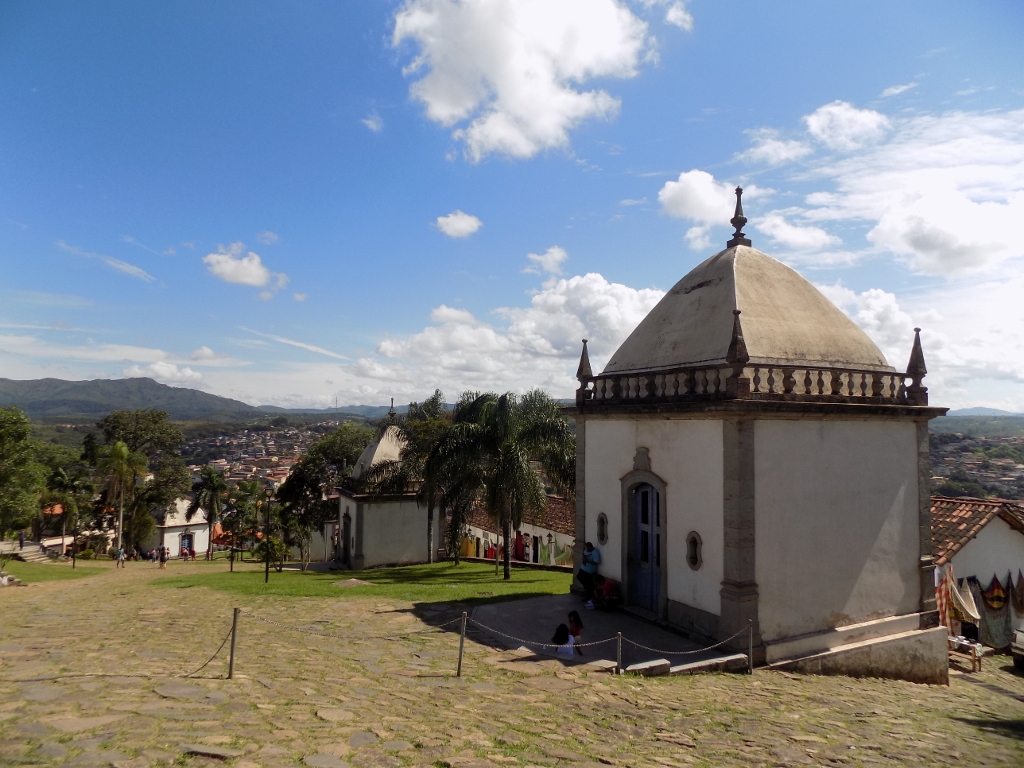 Some of the chapels within the scope of the Sanctuary of Bom Jesus do Congonhas
Some of the chapels within the scope of the Sanctuary of Bom Jesus do Congonhas
In the churchyard of the sanctuary, along a very steep and slightly curved space, there are six chapels dedicated to different episodes from the Passion of the Lord. In order to follow the logical course of the events, they should be in fact visited from the bottom upwards, but Sneža and I started from the top in order not to go up and down too many times.
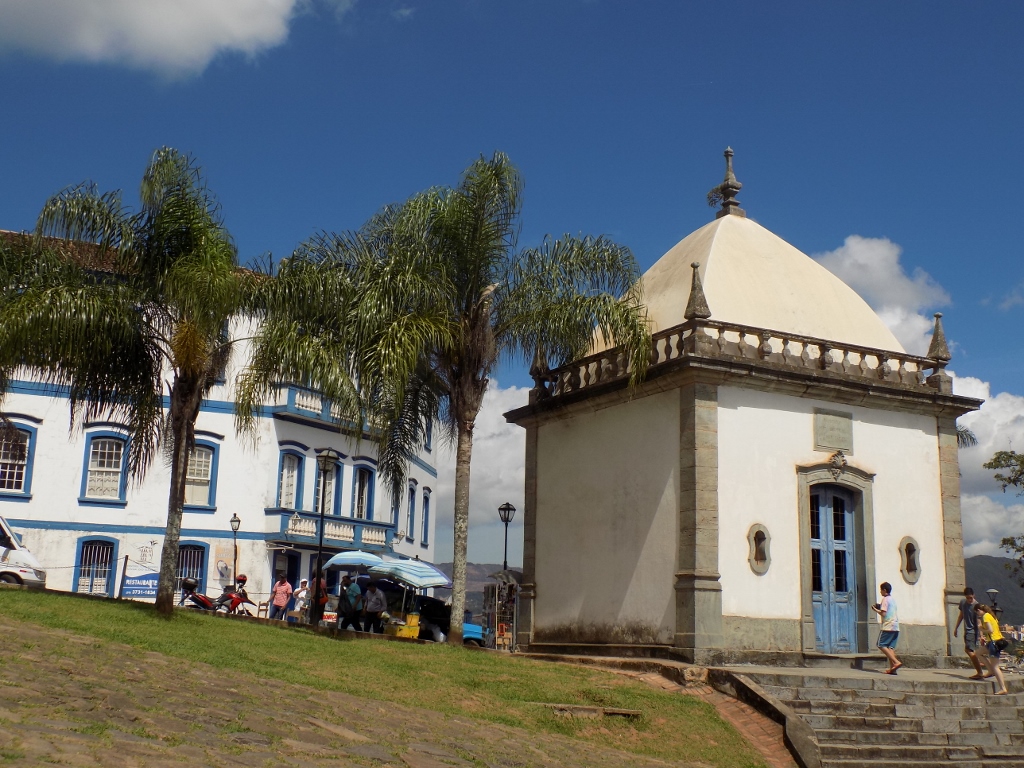 One of the chapels within the scope of the Sanctuary of Bom Jesus do Congonhas
One of the chapels within the scope of the Sanctuary of Bom Jesus do Congonhas
In each chapel there is a group of sculptures that depict a certain scene from the last days of the life of Jesus Christ. There are 64 sculptures in total and they were all made of cedar wood by Aleijadinho at the end of the 18th century, while they were painted by two artists who were more prone to colour-based artistic expression.
Going in the right order (which is from the bottom up), the first chapel is dedicated to the Last Supper. This is followed by: the Agony in the Garden, the Arrest of Jesus, the Flagellation and Crown of Thorns (here, there are in fact two scenes shown one next to the other in the same chapel), the Carrying of the Cross and the Crucifixion.
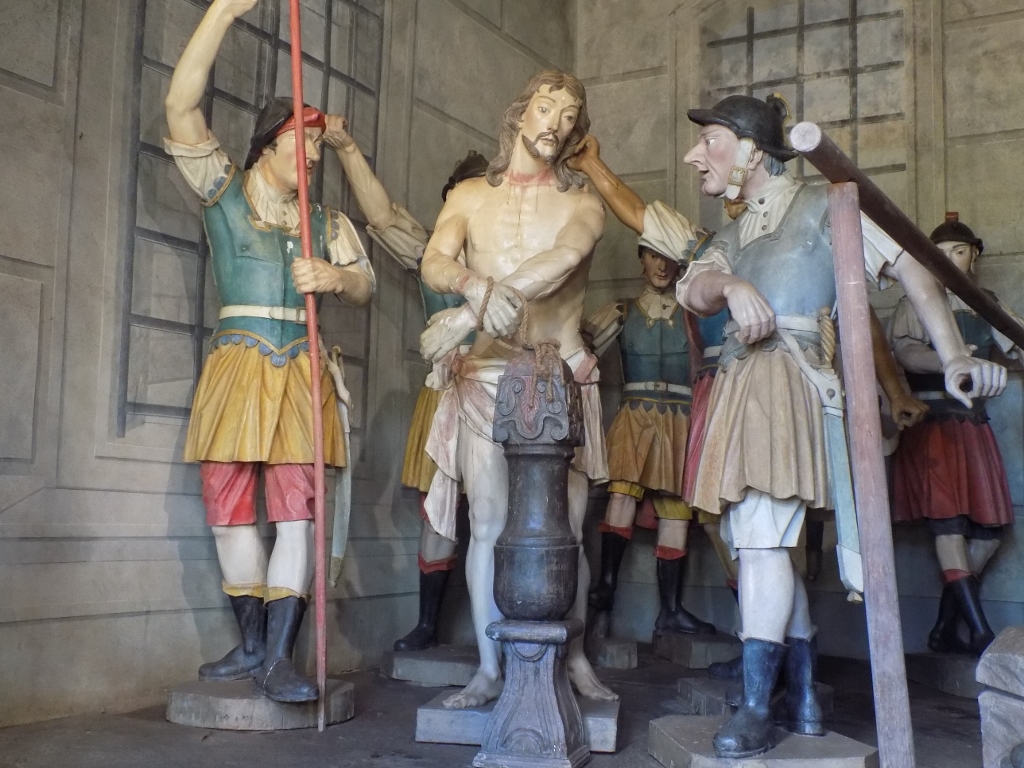 The Flagellation
The Flagellation
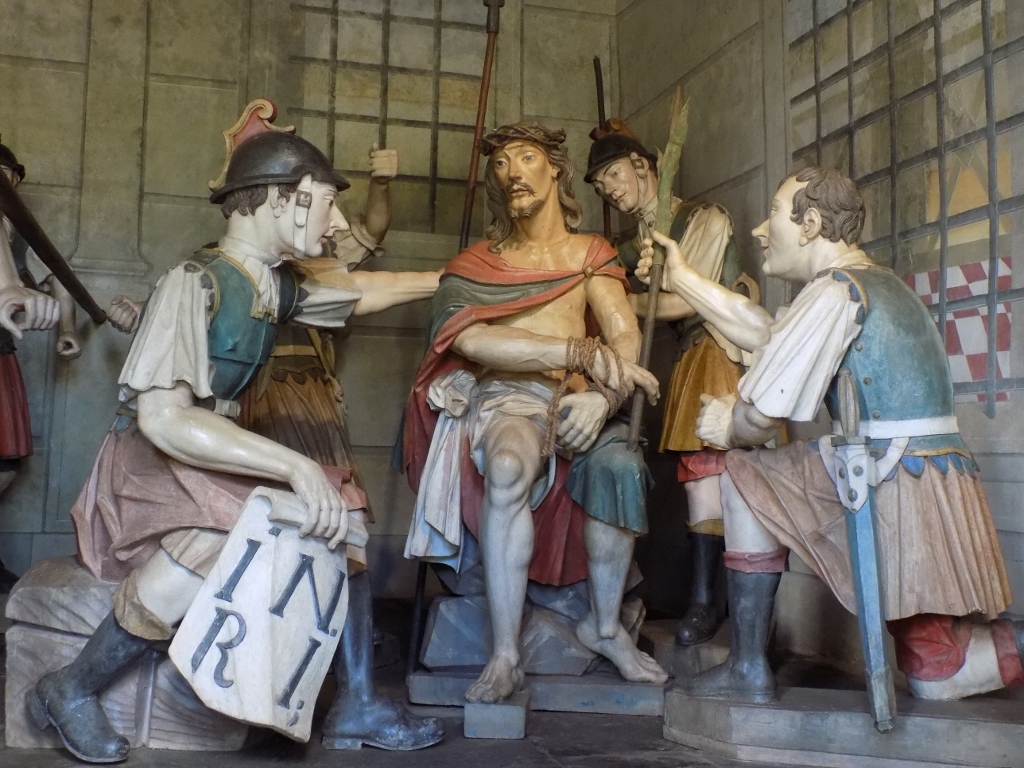 Crown of Thorns
Crown of Thorns
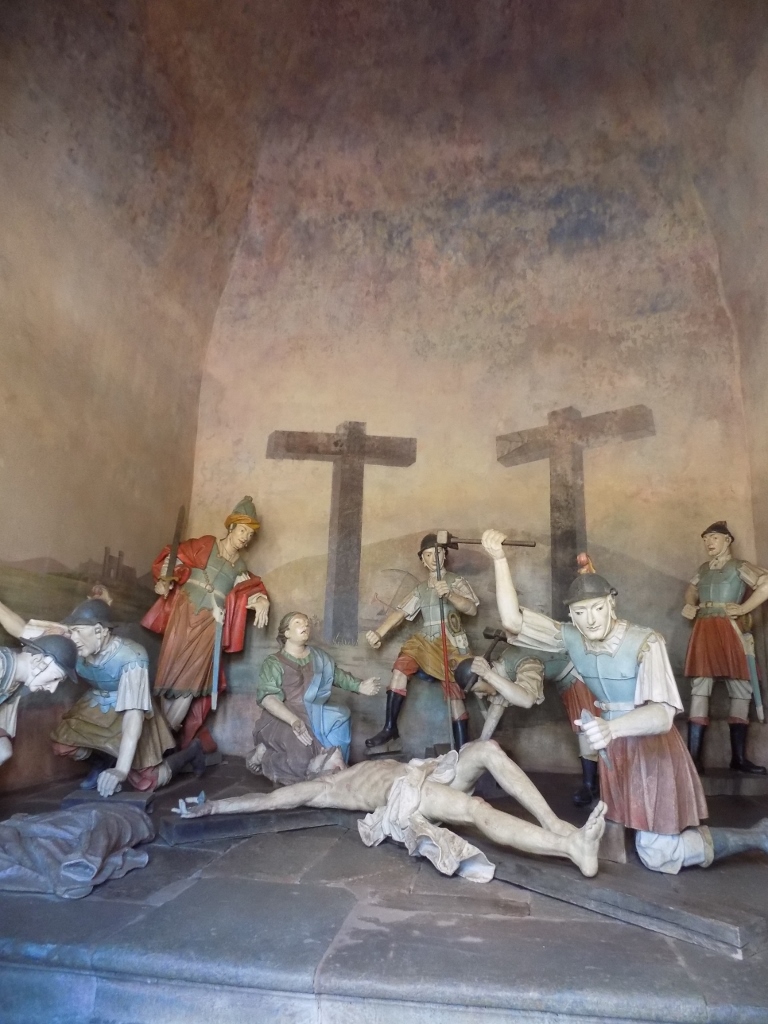 The Crucifixion
The Crucifixion
Of course, we ended our sightseeing at the first chapel, dedicated to the Last Supper, and from there we had another look towards the top of the elevation, the staircase with the sculptures of prophets and the church.
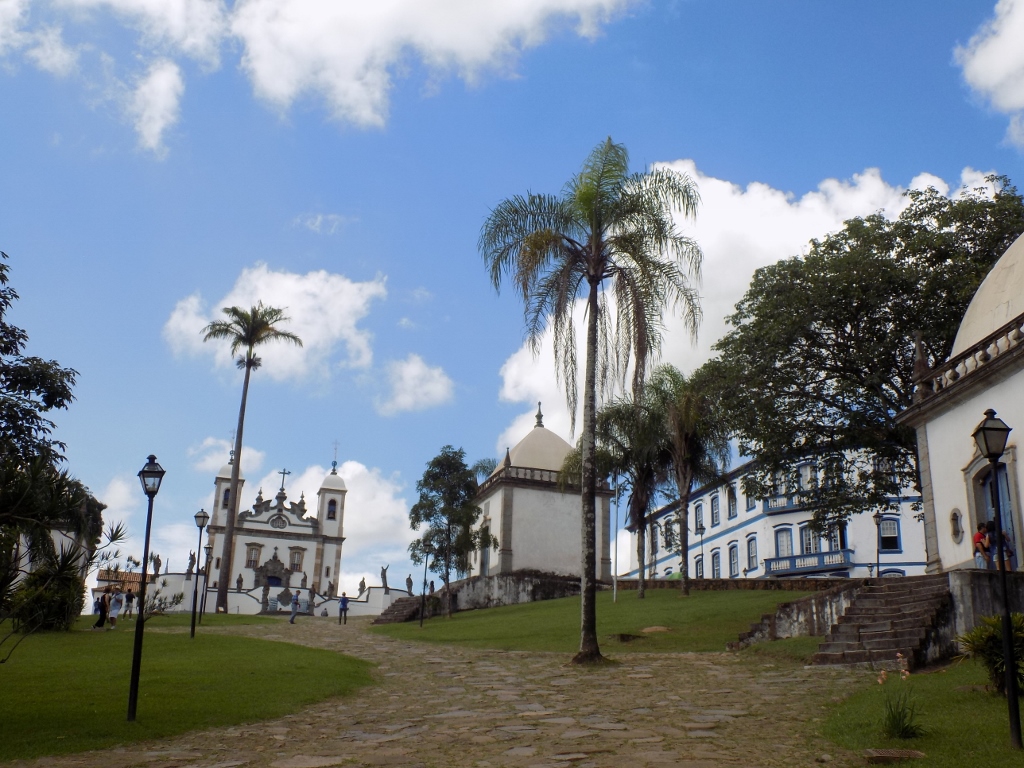 The Sanctuary of Bom Jesus do Congonhas complex
The Sanctuary of Bom Jesus do Congonhas complex
Next to the first chapel there is also a nice terrace from which there is a lovely view at the town of Congonhas. We didn’t have the time to visit the town itself, but it was at least nice to have a glimpse of what it may possibly offer.
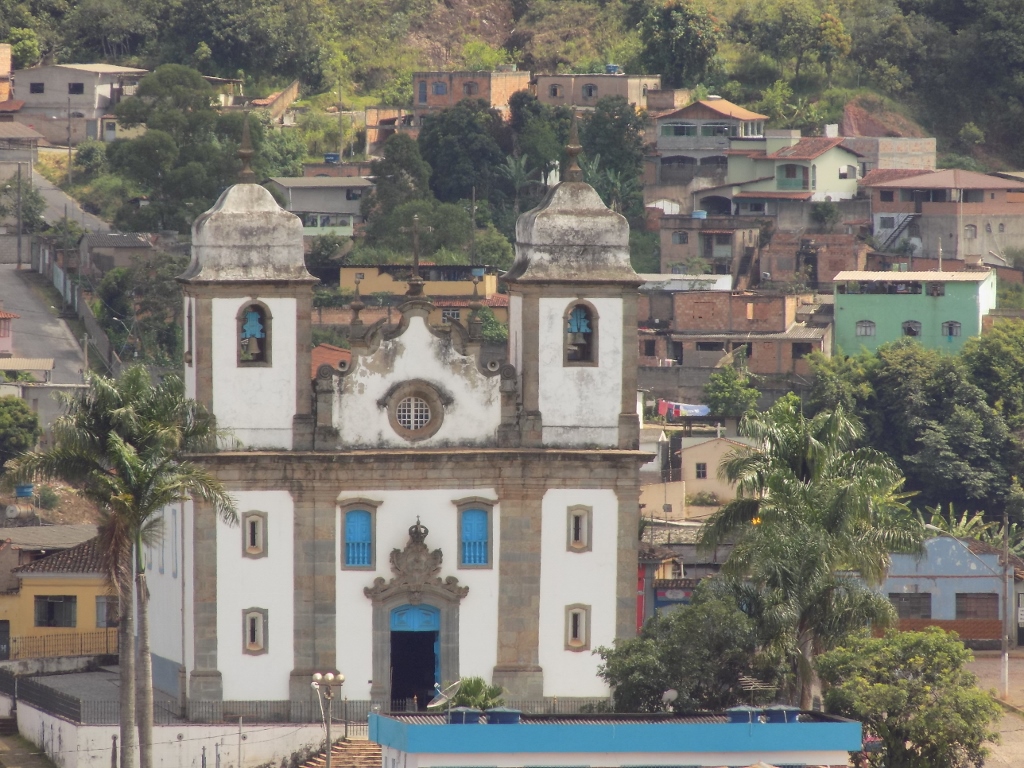 Main Church of Our Lady of Conception, Congonhas
Main Church of Our Lady of Conception, Congonhas
The reason we did not want to stay in Congonhas for much longer was that we still had a lot to visit back in Belo Horizonte, in which we spent three nights in total, but we needed the daylight in order to visit the city itself.
For orientation sake, here is where Sneža and I went in the federal state of Minas Gerais during these days:
As for Belo Horizonte, the first destination according to our plan was the Pampulha Modern Ensemble. When we returned to the city, first we had to find the bus stop, since Pampulha, one of the nine administrative parts of the Belo Horizonte, is a dozen kilometres or so from the centre. We asked around where we could catch a bus and where to buy the tickets, so we solved this. But, then we came to some large bus terminal in Pampulha, which was not our final destination, so we asked around some more, not too successfully though, since we got on a wrong local bus, but we realised this soon enough and already at the next bus stop we got off. Admittedly, apparently in the middle of nowhere, plus it was very hot and the Sun was right above our heads, however, with a lot of luck we managed to catch a taxi and it took us to the place we wanted to see first.
Before I start with my story about the visit to the Pampulha Modern Ensemble, let me say something about communication in Brazil. We encountered very few people who spoke English. Out of the large number of people who do not speak English, some say they speak Spanish, but then in the end it turns out that Spanish is understood and spoken by also a very small number of people. On the other hand, Brazilians are a very kind nation and they do try to help you out, so, regardless of the rare occasions of truly meaningful communication, the two of us still managed to find our way around and to find whatever it was that we actually asked about.
Still, the communication and the finding of my bearings in a verbal manner inspired me to send to my Facebook friends the following message:
The Little Voice Inside of Me
I don’t speak Portuguese. Ok, I still remember a couple of phrases from the old Brazilian soap opera, as well as the name of the main female character – Isaura the Slave Girl. Apart from that, I also know how to say “Yeah, right!” simply because it is the name of my favourite Brazilian song – Mas que nada (https://www.youtube.com/watch?v=zeBDoNBNMro) and you will agree that “Yeah, right” is not a particularly practical expression. Still, this does not prevent me from speaking Portuguese all over the place. How?
Very simply. My base is Spanish, with an Italian word here and there, and then I pronounce all of that in a way for which the little voice inside of me claims to be the spot-on Portuguese accent. Just for a good measure, I drop in a fair amount of “zh,” “sh,” “dʒ” and “ch” and there I am, finding my way around. There is only one problem in all of this. Apparently, I do all of this so well that people I address think that I speak the language and then they tell me something (possibly: “What are you talking about, you mad woman?,” but using a few more words) and then it’s my turn to tell them something I have learned in the meantime, which is: Não compreendo – I don’t understand. Of course, I accompany this with an expressionless face which clearly shows that whatever they have said did not reach me. And then it’s the time to start using hands.
And so, Sneža and I make our way through Brazil quite successfully and it’s not all too bad. We are accompanied by the little voice inside of me.
As for the Pampulha Modern Ensemble, this is a visionary urban project that included several buildings made around an artificial lake that was created here in 1936. During the early 1940’s, the mayor of the city of Belo Horizonte was Juscelino Kubitschek who would later, as the President of Brazil, be the one to instigate the construction of Brasilia. Since he obviously had modern urban-planning and architectural inclinations while he was still “only” the mayor of Belo Horizonte, it was already at that time that he engaged Oscar Niemeyer as the architect who was in charge of the buildings and Roberto Burle Marx as the landscape architect in charge of the creating of the city park. Naturally, there were other artists involved as well, but these two are the most famous. The complex was envisaged as a cultural and leisure centre, and as such it encompassed a Casino, Ballroom, Golf Yacht Club and the Church of St Francis of Assisi.
We first went to the Church of St Francis of Assisi, but unfortunately came across a fence there since the church was being renovated at the time.
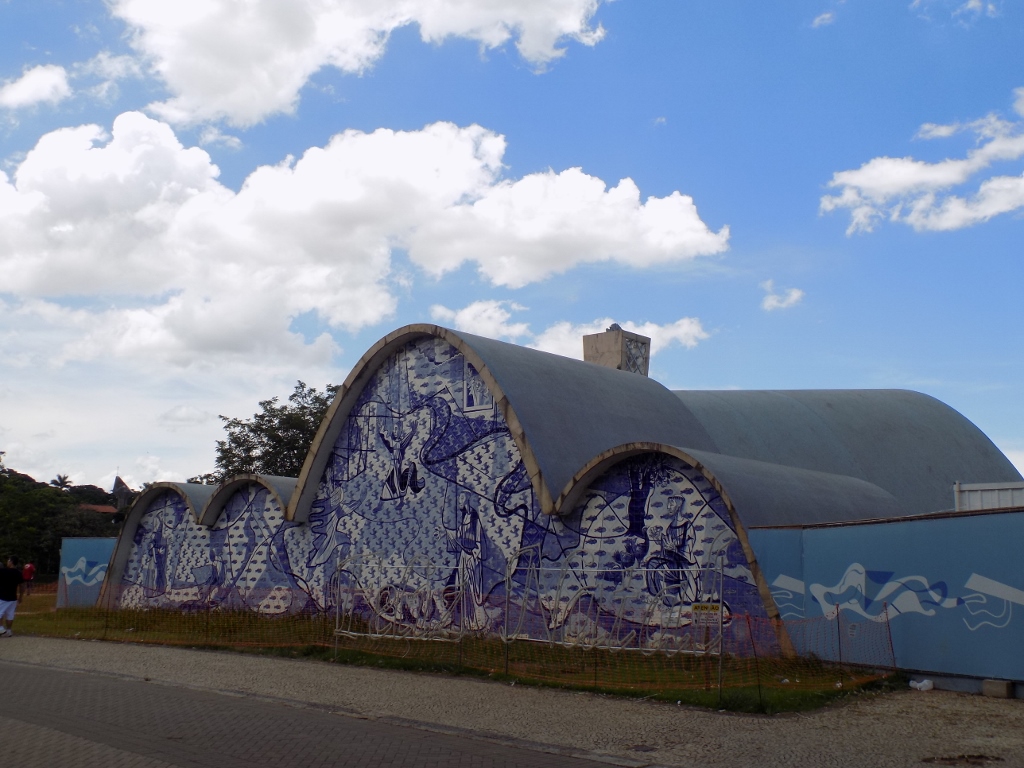 St Francis of Assisi Church, back part
St Francis of Assisi Church, back part
I must emphasise that I don’t know much about architecture and its history, but while reading about this modern ensemble, I realised that what makes it very important, among other things, is that the concrete was used in a plastic manner. Nowadays, we take many things almost for granted, not thinking that they had to go through some development of their own. On the other hand, this was made at the time when WWII raged in most parts of the world. Brazil was lucky enough that it could skip the horrors of the war and play with concrete forms and bluish ceramic tiles.
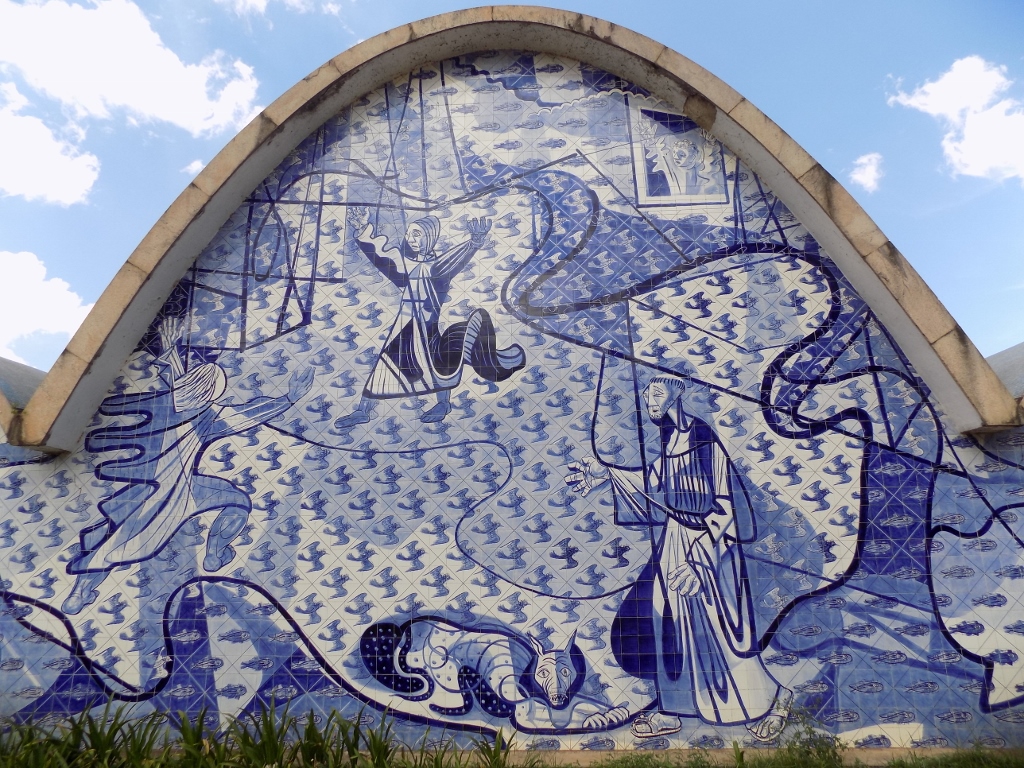 St Francis of Assisi Church, a detail
St Francis of Assisi Church, a detail
As the church was closed, we went for a walk around the lake. I would have gladly walked all around the like, but this is around 18 km, which was too much after all. We had already changed a bunch of transportation means on this day and had been very active with our sightseeing, in addition to which it was rather hot with high air humidity, so we did walk for a short while, but not too much and not all at once.
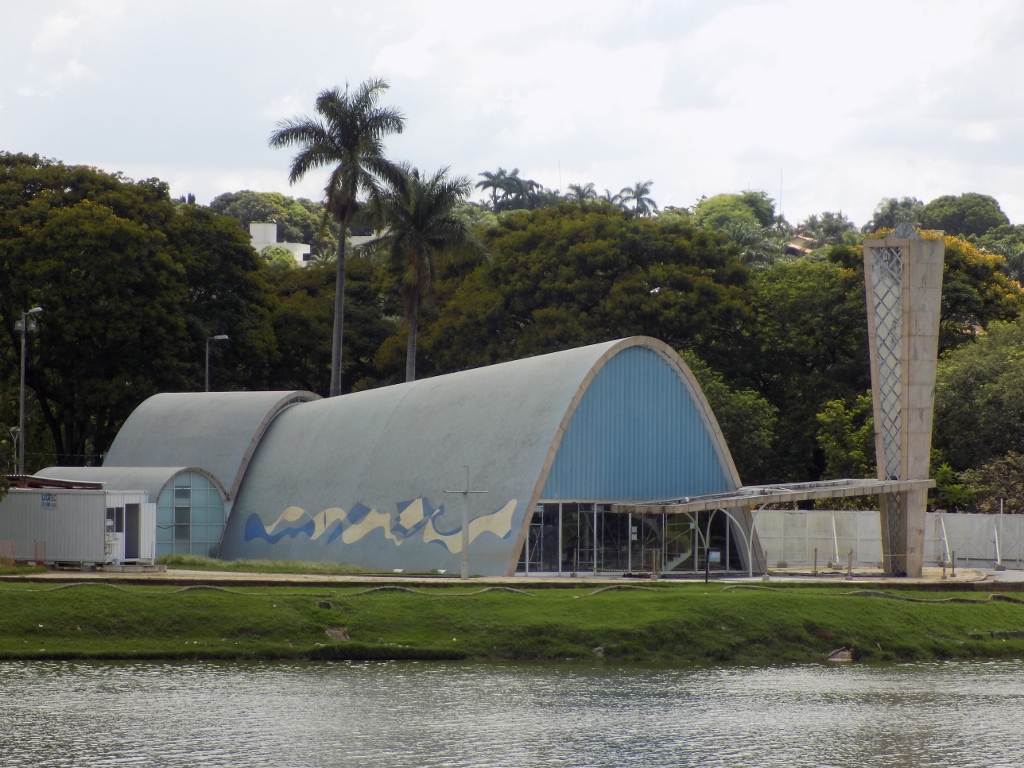 St Francis of Assisi Church, view at the front section; if you look closely, you can see the scaffolding inside
St Francis of Assisi Church, view at the front section; if you look closely, you can see the scaffolding inside
Since the buildings we wanted to see were not all in the same place, but rather scattered around the lake, we then took a taxi and went to the former ballroom built on an artificial islet connected by a small pedestrian bridge.
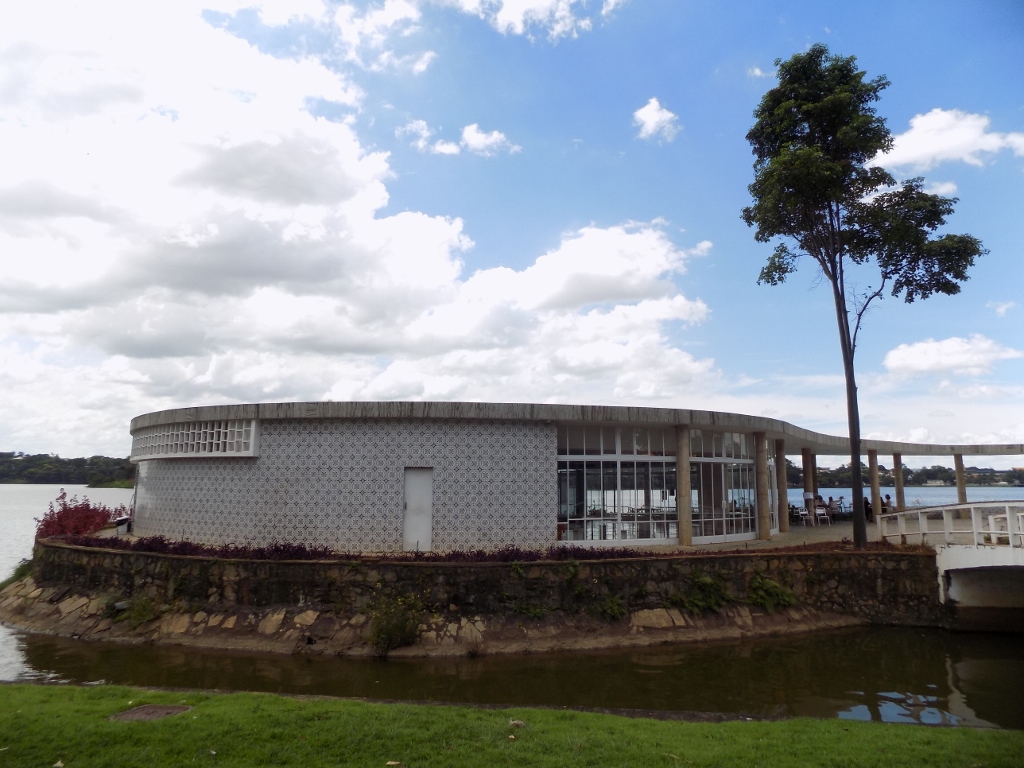 Former Ballroom, a part of the Pampulha Modern Ensemble
Former Ballroom, a part of the Pampulha Modern Ensemble
Nobody dances inside any longer and nowadays it is actually the Centre of Reference in Urbanism, Architecture and Design which one may enter and look at some architectural plans and drawings. We, however, very much appreciated the fact that there was also a café there, so we sat out on the terrace, looking at the lake and enjoying the sipping of the beverage.
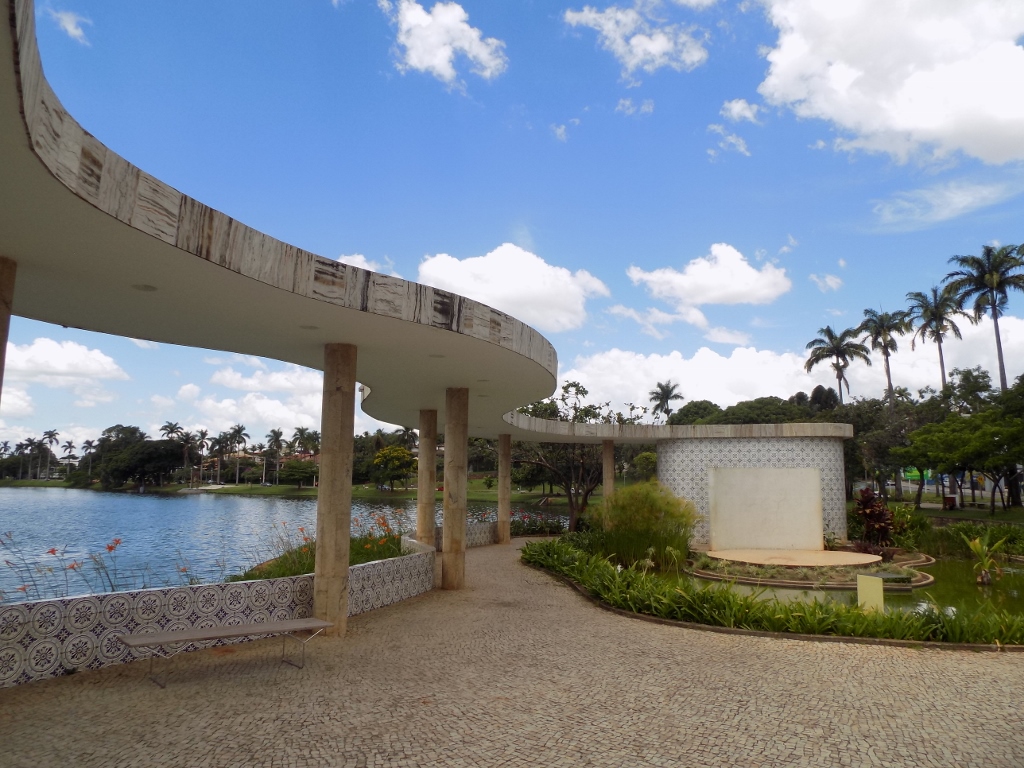 Former Ballroom, a part of the Pampulha Modern Ensemble – a section of the terrace
Former Ballroom, a part of the Pampulha Modern Ensemble – a section of the terrace
While we were sitting there discussing what to do next and how to proceed, we realised that there was not too much point in catching another taxi again and running to the other side to see the building of the former Casino which is nowadays the Pampulha Art Museum. We could see it from the outside from the terrace on which we were taking our coffee.
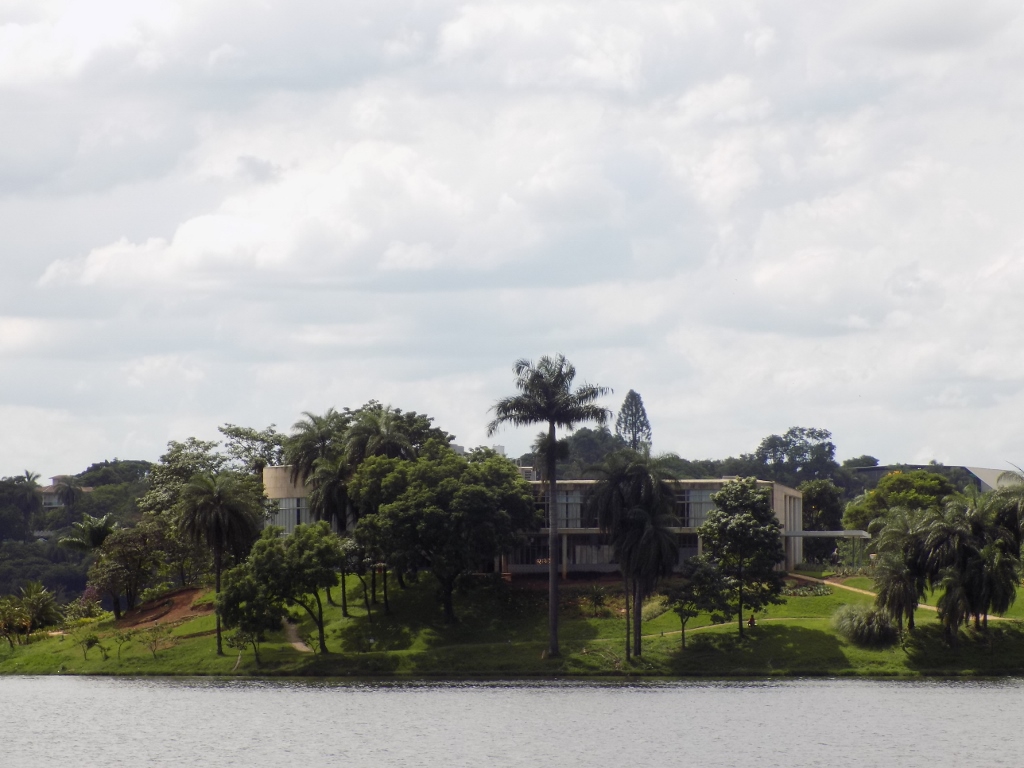 Former Casino, a part of the Pampulha Modern Ensemble
Former Casino, a part of the Pampulha Modern Ensemble
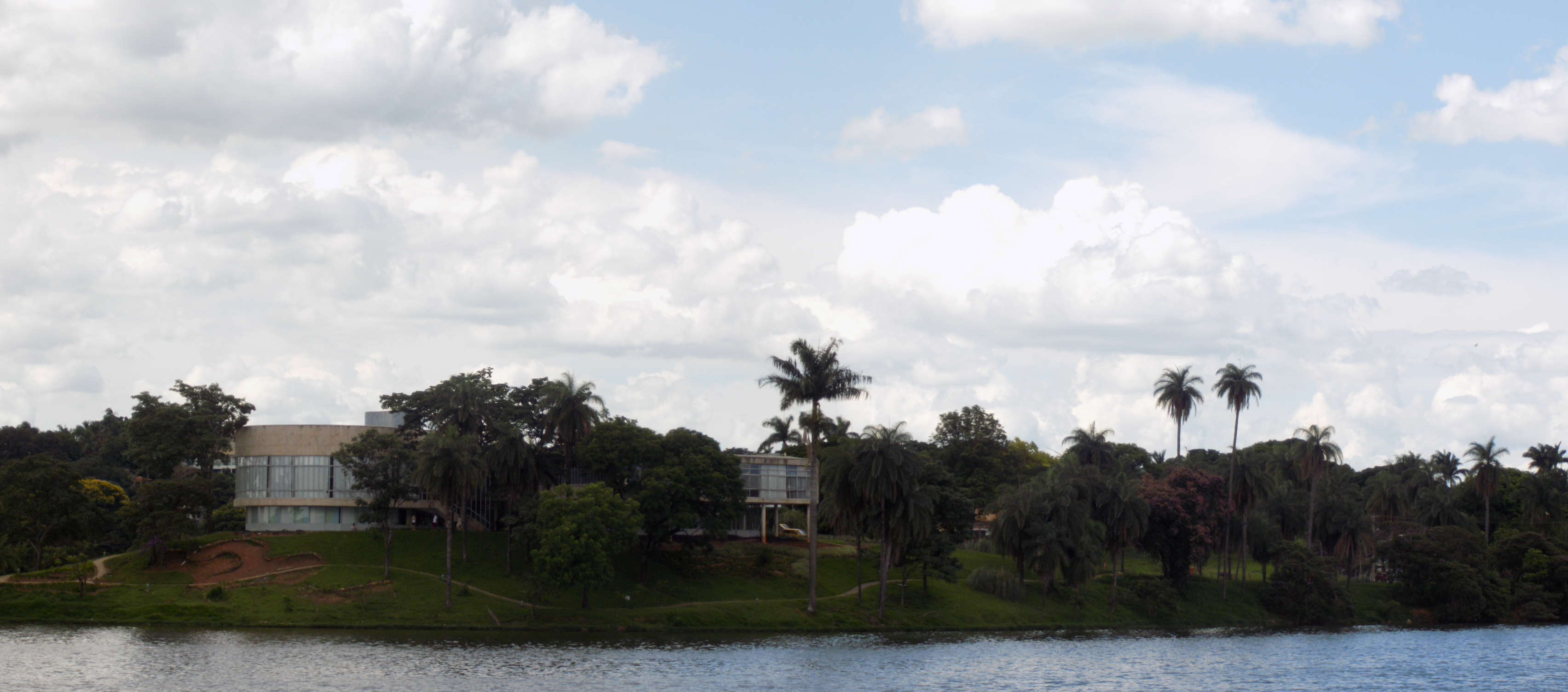
Then we headed for a bus stop in order to return to the downtown area, but we had to walk again since we could not find a taxi and this was in the direction of the church. On our way we passed by the Former Golf Yacht Club (nowadays a Tennis Club), but we didn’t even try to get in. By this time we were just too tired to do any more sightseeing in Pampulha, unless I consider that walk, since we went along a relatively wide pedestrian path which goes around the lake and which is itself in a way a part of this architectural ensemble.
Admittedly, when we finally caught a bus taking us to the centre of the city, it passed by the famous football stadium Mineirão. The stadium has its proper football history, it was built in 1965, but in the recent times it became famous for being the venue of the Brazilian football’s demise. Namely, in one of the semi-finals of the 2014 World Cup held in Brazil that took place precisely here in Belo Horizonte, the Brazilian national team which is said to play the most beautiful and the most creative football lost to Germany by the (in)famous 7 : 1. Brazil, as well as the entire world, were in shock and left breathless. Well, I actually think that the Germans did have enough breath and that they celebrated the victory as loud as they could.